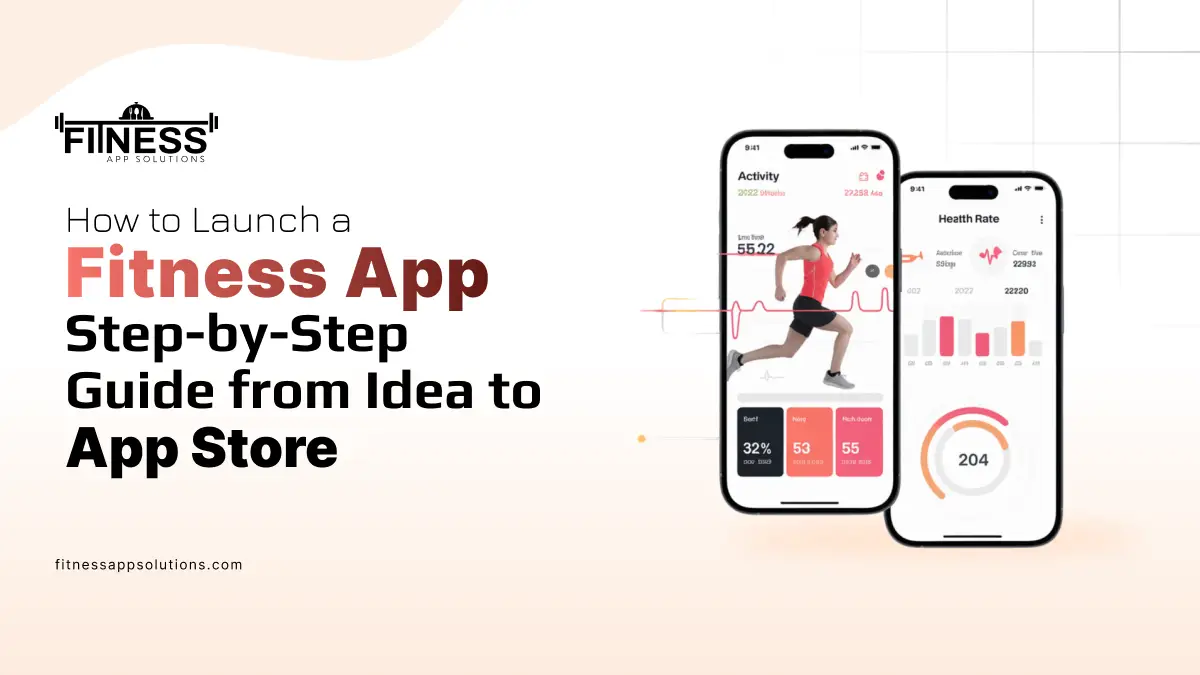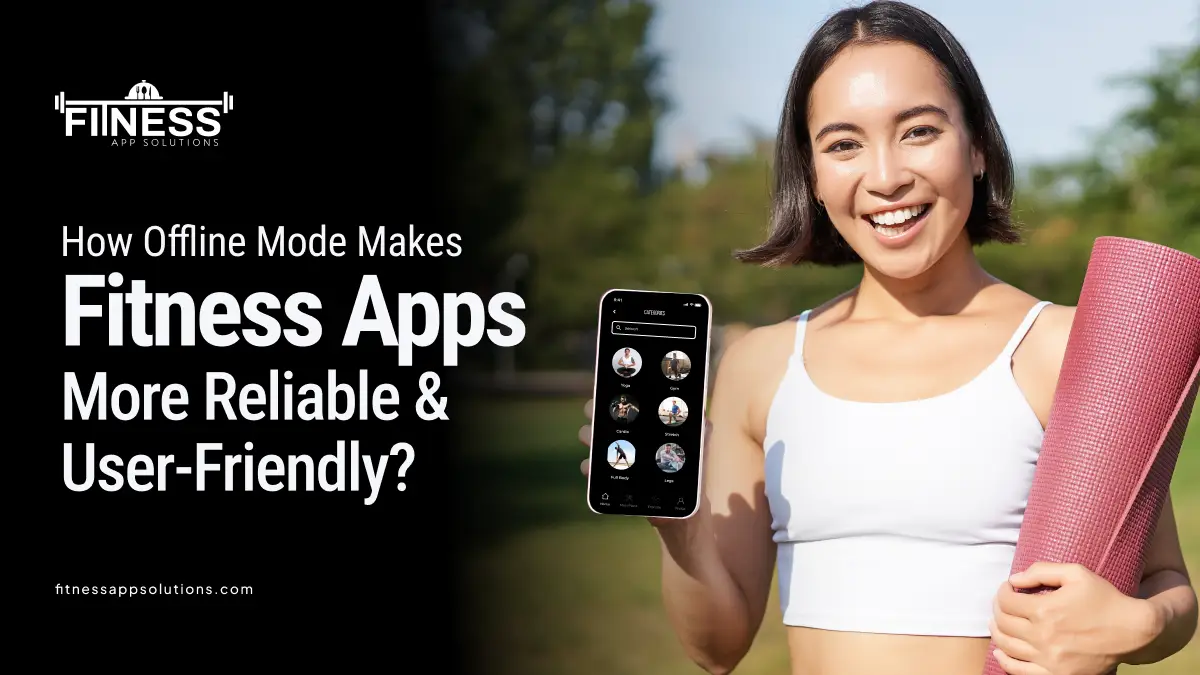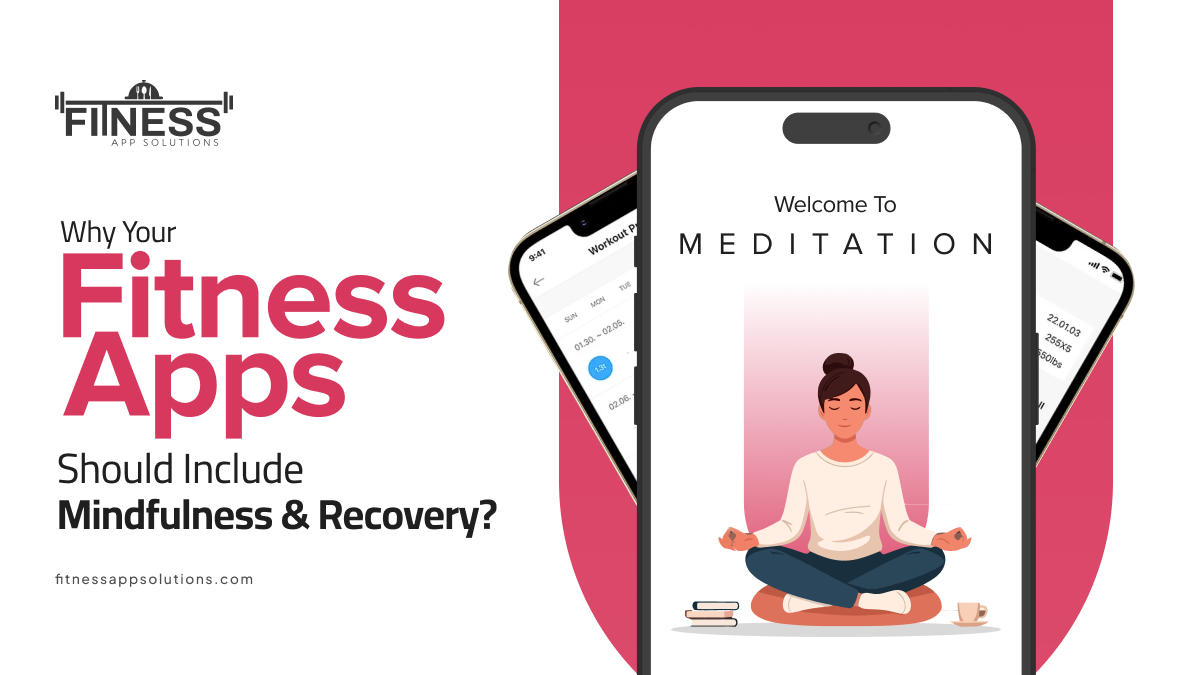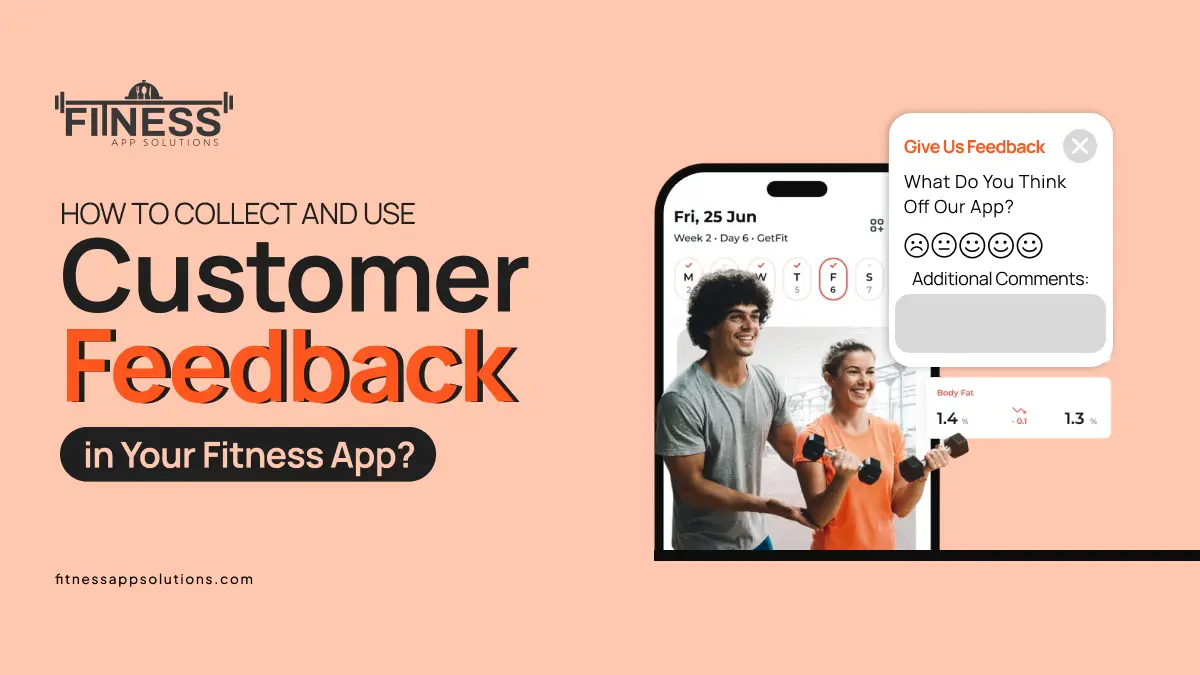Fitness applications have become a part of our daily life for those who want to improve their physical health. With the growth and advancements in smartphones and technology, more and more individuals are seeking apps for a helping hand on their path to fitness. You can be a developer with a good idea or a fitness freak, but having a fitness app is a business. This article will guide you through the whole process of how to create a fitness app, right from brainstorming your app to launching your fitness app successfully on application stores.
What do You Mean by Fitness Apps?
Fitness apps are mobile phone applications that help people achieve fitness goals. They can either be diet or exercise schedulers, and their goal is to help people have a means of monitoring their health and level of fitness.
Key Characteristics OF Fitness Apps:
User-Centric Design:
User-centric design emphasizes user experience and usability, where the application should be easy to use and navigate.
Range of Features:
Provide exercise routines, diet tracking, and social media posting to support a range of user needs.
Accessibility:
On more than one platform (iOS, Android) in order to access a large population of users and offer convenience across devices.
These fitness applications can also be integrated with wearable devices so that users can track their exercises and health data in real-time. This enhances the user experience and provides valuable information both to the developers and to the users.
What are the Basic Features OF a Fitness App?

When the developers start working on a fitness app, they usually start with some minimum features that people will expect and rely on. At least, most first-time apps possess the following:
1. User Profiles:
A simple registration where users can create an account in which they enter personal details, set fitness goals, and log short updates.
2. Workout Plans:
The app serves up tailored regimens according to each person’s starting point and desired outcome, whether that is weight loss, muscle gains, or endurance enhancements.
3. Progress Tracking:
Members have an idea of where they stand by comparing metrics like weight, measurements, and workout logs, sometimes in easy-to-visualize charts or graphs.
4. Nutrition Tracking:
A calorie- and nutrient-tracking food diary has such benefits as bar-code scanning for logging meals and recipe ideas that fit a user’s eating lifestyle.
5. Social Features:
Users can follow friends, share successes, and join friendly challenges, applying a social factor that raises motivation.
6. Push Notifications:
Timely reminders remind consumers of exercises, points close to a milestone, or the need to drink water, keeping them engaged with the app throughout the day.
Additional Features to Consider:
Video Tutorials:
Brief videos walk users through each exercise, ensuring they learn the correct form and prevent unnecessary injuries.
Integration with Wearables:
Integration of heart-rate monitor, smart watch, and fitness band introduces real-time data to the equation, offering a fuller picture of activity and recovery.
Gamification Elements:
Include challenges, rewards & leaderboards to motivate users and facilitate engagement.
What are the Types OF Fitness Apps?

Fitness apps exist in all forms based on their central focus:
1. Workout Apps:
Focusing on workout routines and tracking workouts, typically having an exercise database and a workout program that can be edited.
2. Nutrition Apps:
Help users track diet and calorie intake, with features for meal planning and nutrition information.
3. Health Monitoring Apps:
Track important health readings like heart rate, sleep, and activity, sometimes including the addition of wearable devices to report in real-time.
4. Personal Trainer Apps:
Offer personalized training sessions and coaching, sometimes matching users with certified trainers for personalized training.
5. Community-Based Apps:
Establish a social bond among users for inspiration and motivation, usually through groups, forums, and social share features.
How to Create and Launch a Fitness App?

These are the steps involved in the process of how to create a fitness app:
Step 1: Define Your App Idea & Target Audience
Identify the Problem: What is the fitness problem that your app solves? It’s crucial to understand the pain points of your prospective customers in order to design a relevant solution.
Target Audience: Determine who will use your app (age, fitness level, interests). Conduct surveys or interviews to learn about their needs and likes.
Unique Selling Proposition: What makes your app unique in comparison to ones already available? Search for services or features that differentiate your app from the rest, such as customized workout routines or unique community aspects.
Step 2: Conduct Market Research & Competitive Analysis
Competitor Analysis: Study similar apps and their features. Read user reviews to identify strong points and weak points of existing solutions.
Market Demand: Use tools like Google Trends to estimate demand in a particular niche of fitness. This is a great method for discovering market gaps.
User Feedback: Get users to comment so that you can complete your app idea. Connecting with users early on can provide you with an enormous amount of information and assist you in shaping your app’s layout.
Step 3: Plan Your App Features & Create Wireframes
Core Features: Enumerate the core functionalities following your research. Rank the features that are most aligned with user requirements and the app’s intention.
Wireframing: Employ applications such as Figma or Sketch to create the app layout. Wireframes make it possible to visualize the user interface and user experience, and changes that need to be implemented can be addressed before actual development begins.
Step 4: Choose the Right Tech Stack & Develop an MVP
Tech Stack: Decide on what programming languages and frameworks to utilize (for example, iOS employs Swift, Android employs Kotlin). Use cross-platform technology such as React Native or Flutter for broader distribution.
MVP Development: Create a Minimum Viable Product with essential features for initial testing. This allows you to obtain user feedback and iterate before full release.
Step 5: Develop, Test, & Optimize Your App
Development Phases: Front-end and back-end development should proceed together to prevent integration problems.
Testing: Perform beta testing to gather feedback from users and remove bugs. Use manual and automated testing to ensure a smooth user experience.
Optimization: Optimize the app on various devices and operating systems. Refresh the app at regular intervals for enhanced performance and responsiveness to user input.
Step 6: Prepare for App Store Submission
App Store Guidelines: Follow Apple and Google guidelines. Study the submission guidelines and requirements of the two platforms.
Marketing Materials: Make beautiful screenshots and app descriptions that highlight and promote your app. Create a promotional video to show the app in action.
SEO Optimization: Engage your target keywords to increase visibility when users search for apps in app stores. Research the most popular search terms of fitness apps to gain more exposure for your app.
Step 7: Market Your App & Launch a Fitness App Successfully
Pre-Launch Marketing: Create buzz through social media and email marketing. Offer early access or premium content to create hype.
Launch Day: Track the app’s performance and user feedback very closely. Be prepared to address any problems that arise in a timely manner.
Post-Launch Strategies: Conduct App Store Optimization (ASO) and gather user feedback. Encourage positive users to provide good feedback, which can maximize your app’s visibility and credibility maximized.
What are the Best Practices OF Launching a Fitness App?
To ensure a successful launch a fitness app, utilize these best practices:
User-Centric Design:
Focus on user experience in designing your app. Test for usability to spot areas of improvement.
Continuous Updates:
Frequently update the app according to user input. Add new features and enhancements to keep users active and content.
Engagement Strategies:
Gamify and incentivize users to keep them engaged. Challenge, badges, and leaderboards can be employed to promote competition between friends.
Community Building:
Create a community for your app for user support and motivation. Create forums or social groups for users to share tips and experiences.
Conclusion
Developing a fitness app entails planning, design, and marketing. Following step by step, you can turn your concept for a fitness app into a success story in health that assists users in achieving their objectives. Don’t forget that winning is in understanding your market as well as keeping your app updated constantly to satisfy their needs. With persistence and a well-fabricated plan, your fitness app will be a leading contributor to the health and well-being sector.
Frequently Asked Questions (FAQs)
How much does it cost to create a fitness app?
It depends on the features, complexity, and fees of the development team. (Read more in our detailed guide)
How much time would it take to create a fitness app?
The time to develop may be anywhere from 3 months to over a year, depending on app complexity and team size. A low-complexity app might take 3-6 months, and a more complex app can take 9-12 months or longer.
Do I need a team of developers?
Even though you can do it yourself, professionals will do a better job. Professionals will also be able to deal with technical problems and speed-optimize the app.
How do I make money from my fitness app?
There are standard monetization models such as subscription, in-app purchase, and advertisements. You can also make money from premium content or features, or partner with sporting brands for sponsorship.
On which platform must I deploy my fitness app?
You should deploy on both iOS and Android to get in front of more users. Both have a user base and preferences, so coding for both can stretch your app’s capabilities for success.



